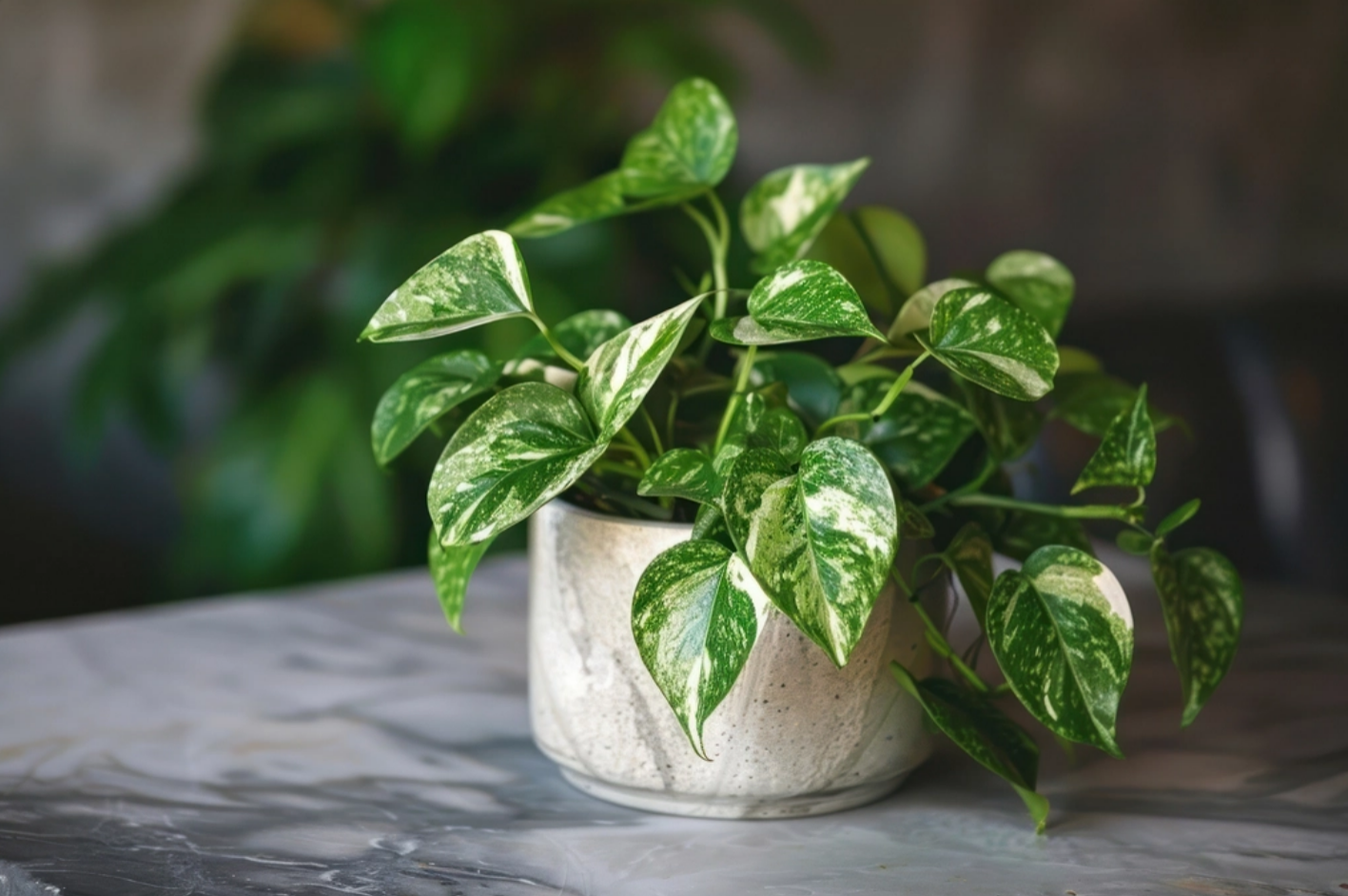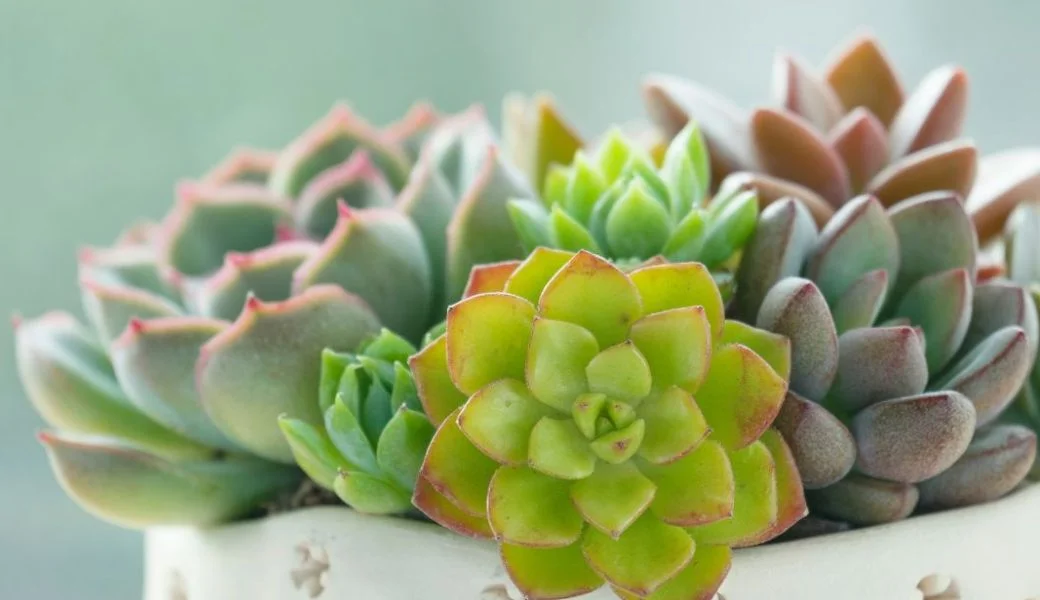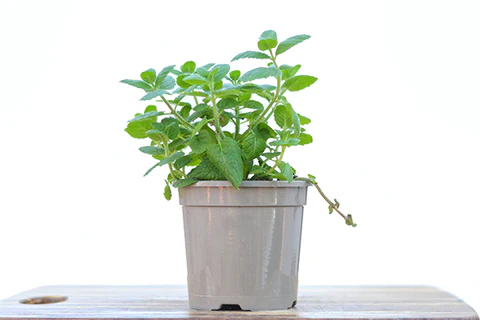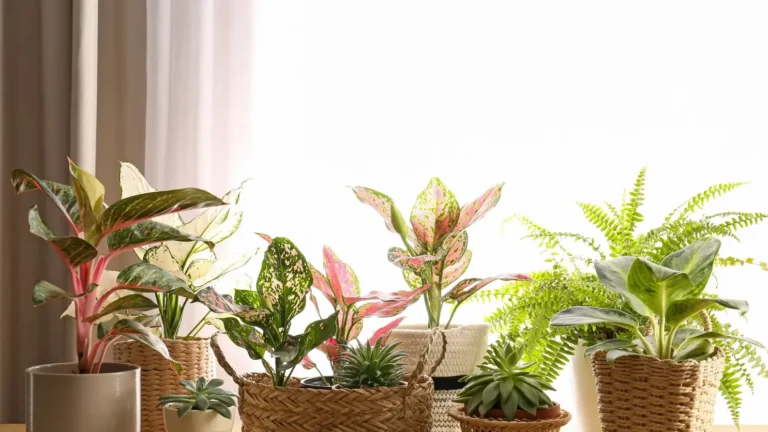Contents
Introduction
Ever wondered how those beautiful, lush houseplants seem to multiply effortlessly? It’s not magic—it’s called plant propagation, and it’s a fantastic way to grow your plant collection without having to buy new ones! Simply put, plant propagation is the process of creating new plants from existing ones. It’s like taking a cutting from a plant you love and growing a brand-new one from it.
If you’re new to this green-thumb adventure, don’t worry! Starting with the right plants can make all the difference. Some plants are incredibly easy to propagate and practically do all the work for you. This is especially great if you’re just getting your feet wet in the world of indoor gardening.
In this guide, we’ll dive into the top 5 plants that are perfect for beginners who want to try their hand at propagation. We’re talking about plants that are not only easy to grow but also forgiving if you make a few mistakes along the way. Whether you’re looking to expand your plant family or simply want to try something fun and rewarding, these plants are your go-to!
So, grab your scissors and get ready to discover some plant buddies that will make propagation a breeze. Let’s jump in and find out which plants are perfect for newbie propagators like you!
Pothos (Epipremnum aureum)
Let’s start with one of the easiest and most forgiving plants out there: Pothos! If you’re new to plant propagation, Pothos is your best friend. This plant is practically foolproof and perfect for beginners who want to see some immediate results.

What Makes Pothos Special?
Pothos, also known as Devil’s Ivy or Golden Pothos, is a stunning plant with heart-shaped leaves that can be green or variegated with gold or white. It’s not just pretty—it’s also incredibly low-maintenance, making it a top pick for anyone looking to start propagating their plants.
How to Propagate Pothos
The great thing about Pothos is how versatile it is when it comes to propagation. You can root Pothos cuttings in both water and soil, and they’ll thrive either way!
- Water Propagation: This is the most popular method. Simply cut a few inches of stem from the plant, making sure it has at least one or two nodes (that’s where the roots will grow from). Place the cuttings in a jar or vase filled with water, making sure the nodes are submerged but the leaves are above the water. In a few weeks, you’ll start to see roots developing. Once they’re a couple of inches long, you can transfer them to soil.
- Soil Propagation: If you prefer to plant directly into soil, just take your cuttings and plant them in a small pot filled with well-draining soil. Keep the soil moist but not soggy, and in a few weeks, your cuttings will start to establish roots.
Caring for Your Pothos
Pothos is a champ when it comes to care. Here’s what you need to know:
- Light Requirements: Pothos does well in a range of lighting conditions, from low light to bright, indirect light. Just avoid direct sunlight, which can scorch its leaves.
- Watering Needs: Water your Pothos when the top inch of soil feels dry. It’s better to underwater than overwater, as Pothos is pretty tolerant of dry spells but can suffer from root rot if it’s too wet.
Common Problems and How to Fix Them
Even though Pothos is low-maintenance, you might run into a few issues. Here’s how to handle them:
- Root Rot: If the roots are sitting in water for too long, they can rot. Make sure to change the water regularly if you’re propagating in water, and use well-draining soil if propagating in soil.
- Pests: Pothos can occasionally attract pests like spider mites or mealybugs. If you spot any, wipe them off with a damp cloth or use an insecticidal soap to get rid of them.
Pothos is not only easy to propagate but also a fantastic plant to have around. With its vibrant leaves and simple care requirements, it’s a great choice for anyone looking to dip their toes into the world of plant propagation. Give it a try and watch your plant collection grow!
Spider Plant (Chlorophytum comosum)
Next up is the Spider Plant, a fantastic choice for anyone just starting out with plant propagation. This plant is not only eye-catching with its arching green and white leaves but also incredibly easy to propagate. If you’re new to growing plants from cuttings, the Spider Plant is a great one to try.
Why Spider Plants Are So Great
The Spider Plant, sometimes known as Chlorophytum comosum or simply as the Spider Plant, is famous for its long, slender leaves that create a lovely cascading effect. It’s also known for producing “babies” or “pups” that make propagation a breeze. These pups are little plantlets that grow off the main plant and are ready to be potted up into new plants.
How to Propagate Spider Plants
Propagating Spider Plants is super simple and fun! Here’s how to do it:
- Using Pups: The most common way to propagate Spider Plants is by using the plantlets (pups) that dangle from the main plant. These pups have small roots already starting to grow, so they’re practically ready to become new plants. Just gently remove a pup from the main plant, making sure it has a few roots attached. You can then pot it up in a small container with fresh potting soil. Keep the soil moist, and you’ll soon see your new Spider Plant start to grow.
Caring for Your Spider Plant
Spider Plants are known for their easy-going nature, making them perfect for beginners. Here’s how to keep your Spider Plant happy:
- Light Requirements: Spider Plants thrive in bright, indirect light. They can tolerate lower light conditions, but they grow best with a little more sunshine. Avoid direct sunlight, which can scorch their leaves.
- Watering Needs: Water your Spider Plant when the top inch of soil feels dry. They prefer to dry out a bit between waterings. Be cautious not to overwater, as this can lead to root rot.
Common Problems and Solutions
Even though Spider Plants are hardy, you might encounter a few issues. Here’s how to deal with them:
- Brown Leaf Tips: If you notice the tips of the leaves turning brown, it could be due to low humidity or over-fertilization. Increase humidity by misting the plant occasionally or placing it near a humidifier. Also, avoid using too much fertilizer.
- Pests: Occasionally, Spider Plants might attract pests like spider mites or aphids. If this happens, give your plant a good rinse with water or use insecticidal soap to treat the infestation.
Spider Plants are not only easy to propagate but also fun to grow and care for. With their unique look and straightforward care, they’re a perfect choice for anyone new to plant propagation. So, grab those pups and start growing your own Spider Plants!
Succulents (Various Species)
Let’s dive into the wonderful world of succulents! These trendy plants are not only stunning but also incredibly easy to propagate, making them perfect for beginners. If you love the idea of growing new plants from your existing ones, succulents are a fantastic choice.

Why Succulents Are So Awesome
Succulents are known for their fleshy, water-storing leaves and striking shapes. They come in a wide variety of colors and forms, from rosettes to trailing vines. Because they store water in their leaves, they’re pretty low-maintenance and forgiving, which makes them ideal for those just starting out with propagation.
How to Propagate Succulents
Succulents are a joy to propagate, and there are a couple of easy methods you can try:
- Leaf Cuttings: This is one of the simplest ways to propagate succulents. Gently twist a healthy leaf off the plant, making sure it comes off cleanly from the stem. Let the leaf dry out for a day or two so the cut end can callus over. After it’s callused, place the leaf on top of a well-draining soil mix. In a few weeks, you should start to see tiny roots and a new baby plant forming. Once the new plant is big enough, you can pot it up into its own container.
- Offsets: Many succulents produce offsets, or “babies,” around the base of the main plant. These offsets can be separated from the parent plant and planted in their own pots. Simply gently pull or cut the offset away from the main plant, making sure it has some roots. Plant it in well-draining soil and water lightly until it establishes itself.
Caring for Your Succulents
Succulents are pretty low-maintenance, but there are a few things to keep in mind to keep them thriving:
- Light Requirements: Succulents love bright, indirect light. A sunny windowsill is often a perfect spot for them. If they don’t get enough light, they might become leggy or lose their vibrant colors.
- Watering Needs: Succulents are adapted to dry conditions, so they don’t need frequent watering. Water them thoroughly but infrequently, allowing the soil to dry out completely between waterings. Overwatering can lead to root rot, so it’s better to err on the side of underwatering.
Common Problems and Solutions
Even though succulents are pretty hardy, you might run into a few issues. Here’s how to tackle them:
- Root Rot: This usually happens from overwatering or poor drainage. Make sure your pots have drainage holes and use a soil mix designed for succulents.
- Pests: Succulents can occasionally attract pests like mealybugs or aphids. If you notice any, gently remove them with a cotton swab dipped in alcohol or use an insecticidal soap.
Succulents are a fantastic choice for anyone looking to get into propagation. With their unique beauty and simple care requirements, they’re sure to become a favorite in your plant collection. So grab some cuttings or offsets, and start growing your succulent family today!
English Ivy (Hedera helix)
Let’s talk about English Ivy, a classic and versatile plant that’s perfect for beginners looking to get into propagation. English Ivy, or Hedera helix, is a charming plant that’s not only easy to grow but also super easy to propagate. If you’re ready to add some greenery to your home with minimal fuss, English Ivy is a fantastic choice!
Why English Ivy Is a Great Choice
English Ivy is loved for its attractive, glossy leaves and its ability to grow in various shapes and sizes. It can be grown as a trailing plant or even trained to climb, making it a versatile addition to any space. Plus, it’s really forgiving, which is perfect for those just starting out with plant propagation.
How to Propagate English Ivy
Propagating English Ivy is a breeze. Here’s a simple guide to get you started:
- Stem Cuttings: The easiest way to propagate English Ivy is through stem cuttings. Start by selecting a healthy, non-flowering stem. Cut a few inches of the stem just below a leaf node (the little bump where leaves grow from). Remove the lower leaves from the cutting, leaving a few leaves at the top. Place the cutting in a glass of water or directly into a small pot filled with soil. If you’re using water, make sure the node is submerged but the leaves are above water. Change the water every few days to keep it fresh. In a few weeks, you’ll see roots starting to form. Once the roots are a few inches long, you can transfer the cutting to soil.
Caring for Your English Ivy
English Ivy is quite easy to care for, but here are a few tips to keep it thriving:
- Light Requirements: English Ivy prefers bright, indirect light. It can tolerate lower light conditions but will grow more slowly. Avoid placing it in direct sunlight, as it can scorch the leaves.
- Watering Needs: Keep the soil consistently moist but not soggy. Allow the top inch of soil to dry out between waterings. English Ivy likes humidity, so occasional misting can help keep it happy.
Common Problems and Solutions
English Ivy is generally low-maintenance, but you might encounter a few issues. Here’s how to handle them:
- Leaf Drop: If your Ivy’s leaves are dropping, it might be due to sudden changes in light or temperature. Keep your plant in a stable environment and avoid placing it near drafts or heaters.
- Mildew: English Ivy can sometimes develop mildew, especially if it’s in a very humid environment. Ensure good air circulation around the plant and avoid letting water sit on the leaves.
English Ivy is a fantastic plant for beginners who want to dive into propagation. With its easy care and rapid growth, it’s sure to become a favorite in your plant collection. So, grab some cuttings and start growing your own English Ivy!
Mint (Mentha spp.)
Last but definitely not least, let’s chat about mint! This herb isn’t just for adding flavor to your tea or dishes—it’s also a fantastic plant to propagate, especially for beginners. Mint (Mentha spp.) is super easy to grow and propagate, making it a perfect addition to your gardening adventures.

Why Mint Is a Top Pick
Mint is a wonderful plant with its fragrant leaves and refreshing scent. It’s not only great for culinary uses but also quite simple to propagate. Mint grows quickly and can be quite prolific, which means you’ll have plenty of fresh mint to use in your kitchen or garden. Plus, it’s very forgiving, which makes it ideal for new plant propagators.
How to Propagate Mint
Mint is a champion when it comes to propagation. Here’s how you can easily grow new mint plants:
- Stem Cuttings: The easiest way to propagate mint is by using stem cuttings. Choose a healthy mint plant and cut a few inches from a stem, just below a leaf node (where the leaves are attached). Remove the lower leaves from the cutting, leaving a few leaves at the top. Place the cutting in a glass of water, making sure the node is submerged but the leaves are above the water line. Change the water every few days to keep it fresh. In about a week or so, you’ll see roots starting to form. Once the roots are a few inches long, you can transfer the cutting to a pot with soil.
Caring for Your Mint
Mint is quite low-maintenance, but there are a few things you should keep in mind:
- Light Requirements: Mint thrives in bright, indirect light. It can tolerate some direct sunlight, but too much can scorch its leaves. A sunny windowsill is usually a perfect spot.
- Watering Needs: Keep the soil consistently moist, but not waterlogged. Mint likes regular watering, so make sure the soil never dries out completely.
Common Problems and Solutions
Mint is generally easy to grow, but here are a few issues you might encounter:
- Pests: Mint can sometimes attract pests like aphids or spider mites. If you notice any, you can remove them by washing the plant with a gentle stream of water or using insecticidal soap.
- Rapid Growth: Mint can spread quickly and become invasive. If you’re growing it in a garden bed, consider using a container to keep its growth in check, or regularly trim it to manage its spread.
Mint is a fantastic plant for beginners looking to start propagating. With its easy care and quick growth, you’ll soon have an abundance of fresh mint. So grab some cuttings and start growing your mint garden today!
Conclusion
So there you have it—five fantastic plants that are perfect for beginners wanting to dive into plant propagation! Whether you’re looking to grow a lush Pothos, a charming Spider Plant, a variety of vibrant succulents, a classic English Ivy, or a refreshing Mint, these plants are all great choices to start with.
Summary of Key Points
Each of these plants offers something unique and is relatively easy to propagate, making them ideal for those new to the hobby. From the simple water propagation of Pothos to the delightful offsets of succulents, you’ve got plenty of options to experiment with. Plus, they’re all forgiving and low-maintenance, which means you can focus on enjoying the process rather than stressing over complicated care routines.
Encouragement for Beginners
Don’t be afraid to give propagation a try! It’s a fun and rewarding way to expand your plant collection and share your green-thumb successes with friends and family. Each successful propagation will boost your confidence and get you excited about exploring even more plant varieties.
Additional Resources
If you’re eager to learn more about plant propagation or looking for additional tips and tricks, there are plenty of resources available. Books, online forums, and gardening blogs can offer valuable insights and inspiration. And remember, practice makes perfect—don’t be discouraged if your first attempts aren’t perfect. With time and a bit of patience, you’ll become a propagation pro in no time!
Thanks for joining us on this journey through the world of easy-to-propagate plants. Grab your scissors, get your hands dirty, and enjoy growing your new green friends. Happy propagating!



